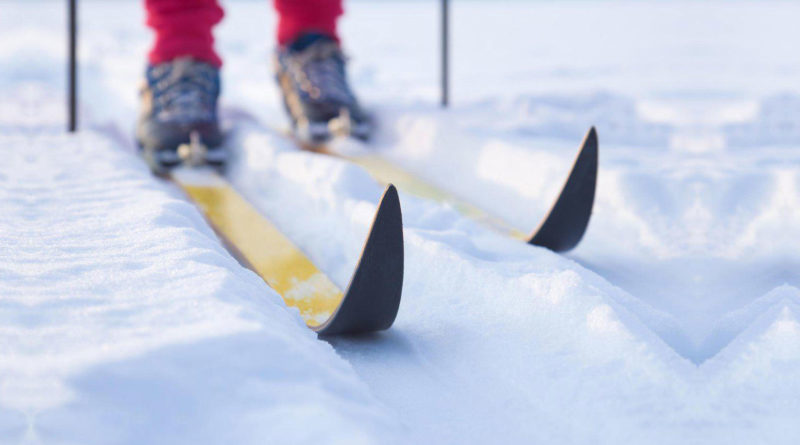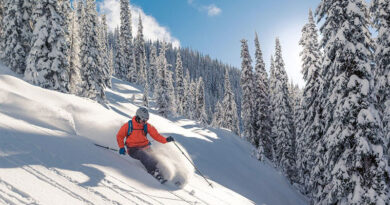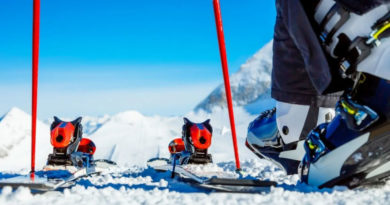How Long Should Cross-Country Skis Be?
There is no doubt that cross-country skiing is fun. But to fully enjoy your skiing experience, you would need the correct ski length. If you get a set of skis with the incorrect length, your skiing experience would probably suck.
Incorrect length is a common mistake made by people. They are mostly unaware of the difference that the ski length makes in their skiing experience. So, what is the right length of cross-country skis? The answer depends on the type of cross-country skiing that you are interested in.
Types of Cross-Country Skiing
The reason for the confusion that arises about the length of cross-country skis is because of the difference in the type of cross-country skiing. If you are unaware, you would most likely make the wrong choice. So, it’s better to get to know the different types of cross-country skiing for the best decision.
There are three types of cross-country skiing:
- Classical skiing
- Skate skiing
- Off-track skiing
Classical skiing and skate skiing are both done on groomed tracks while off-track, as the name suggests, is done off-track. But all three of them require different gear.
1. Classical Skiing
Classical skiing is similar to walking where you use your opposite legs and arms to move in a straight line. These skis are narrower so that they can fit on the track and don’t have metal edges. They are shaped like an arch which gives them a special feature; a climbing zone or a kick zone, whatever you may call it.
The climbing zone is the middle part of the ski that interlocks with the snow to prevent slipping backward – helps in propelling forward and is extremely helpful going uphill. Classical skis are of two types based on their climbing zones; waxable or waxless.
- Waxable skis use grip wax which forms wax pockets in the climbing zone to grip the snow. The downside is obvious – you would have to apply grip wax. The upside is that it gives you a lot of versatility. You can apply variable amounts of wax based on the conditions outside to get the perfect balance between grip and glide that your skis would provide. Waxable skis are suitable for experienced skiers who want optimum performance.
- Waxless skis, on the other hand, don’t require grip wax. Instead, they use replaceable skin patches of directional fibers to grip the snow. Waxless skis are becoming popular among beginners and amateurs because they are more durable and don’t require the application of grip wax.
However, both, waxable and waxless skis require the application of gliding wax.
2. Skate Skiing
In skate skiing, you use a side-to-side movement to propel yourself forward. It is a demanding sport that requires a certain amount of fitness. As with classical skis, skate skis are narrow and don’t have metal edges.
But skate skis are shorter than classical skis, smooth at the bottom, and require a thin coat of glide wax to glide better on the snow. They don’t have climbing zones to grip the snow. They use edges, instead, to propel forward.
3. Off-track Skiing
Off-track skiing, as the name suggests, is where you go off-track. It’s also known as touring skiing. Off-track skiing is for people who like to explore. You will come across different types of snow conditions making it adventurous.
Off-track skis are shorter and wider than nordic skis, that is, classical and skate skis. They are good for hilly terrains and have metal edges suitable for traversing and descending. They are similar to classical skis but with more emphasis on varied terrain and snow conditions.
Getting the Right Length
Ski lengths are entirely different for different ski styles. The right length is essential for control. With the right length, you will be able to turn and stop precisely with less effort. But now that we know the types of skiing, it is easier to figure out what length to get for which style.
A good rule of thumb for choosing the right length is that the skis shouldn’t be higher or lower than the nose. There are a few reasons to change the length of the skis which are discussed later. However, longer skis are faster but are difficult to maneuver. Shorter skis are slow but allow fast turning.
Skis too short won’t glide and skis too long won’t grip. If you are ever stuck between sizes, think about the level of skiing that you are at. If you are a beginner, go for shorter skis or if you are a fairly experienced skier, you are free to choose longer skis. Learn more about ski lengths here.
There are two factors in determining ski lengths:
- Weight
- Skill level
Skis have flex which is determined by the length of the skis. Skis support the body weight of the skier. The body weight of the skier along with the flex of the skis determines how the skis will behave under the skier. A perfect match would provide the perfect balance between grip and glide.
The following chart provides the standard length of skis based on body weight:
| BODYWEIGHT (LB) | |||
|---|---|---|---|
| 100-110 | 180-190 | 170-180 | 160-166 |
| 110-120 | 182-192 | 172-182 | 160-166 |
| 120-130 | 185-195 | 175-185 | 170 |
| 130-140 | 187-200 | 177-187 | 170-176 |
| 140-150 | 190-205 | 180-190 | 170-176 |
| 150-160 | 195-210 | 185-195 | 180 |
| 160-180 | 200-210 | 190-200 | 180-186 |
| >180 | 205-210 | 190-200 | 190-196 |
| Ski Type | Classic | Skating | Touring |
Reasons to Choose Shorter Skis
Shorter skis are somewhere around the chin. As stated earlier, they are easier to control but slow. You can deviate from the above chart to choose shorter skis. Choose shorter skis if
- You are a beginner
- You are into short and quick turns.
Reasons to Choose Longer Skis
Longer skis are faster making them a preferred choice for enthusiasts. Choose longer skis if
- You are experienced.
- You want to ski fast and aggressively.
Expert skiers – both, classical and skate – have the skill and fitness to flex stiffer skis. They prefer longer skis for increased rigidity and the glide that it provides.




